In a manufacturing environment where consistency, reliability and cost‑efficiency reign supreme, selecting the right fat system for your confectionery or coating lines can make or break production‑runs. When you hear [Main Keyword] — “high‑quality cocoa butter substitutes” — this isn’t about a casual home kitchen swap; we’re talking industrial‑grade solutions that step into the gap where full cocoa butter becomes impractical, prohibitively expensive or operationally restrictive.
Why should you care? Because for many plants, sourcing pure cocoa butter introduces supply‑chain risk, variable quality, higher cost‑per‑unit and even production bottlenecks (for example, tempering issues, melt profile variances, shelf‑life inconsistencies). In our experience supplying manufacturing facilities through MT Royal, we’ve seen that the right alternative fat system – properly selected – can deliver the required texture, gloss, snap and melt behaviour without compromising overall production efficiency. At the same time, we’ve observed plants stumbling because they treated substitutes like cocoa butter without understanding the underlying fat chemistry.
In this article we will:
- Define the fundamentals (what cocoa butter does, why it’s so special)
- Explore the value‑propositions and benefits of using high‑quality cocoa butter substitutes in a plant‑setting
- Examine common pitfalls, misconceptions and procurement traps specific to industrial operations
- Provide actionable advice, step‑by‑step guides, pro tips, comparisons, and industrial logistic considerations
- Offer a handy FAQ tailored to manufacturing decision‑makers
- Close with a reflective industry‑driven call‑to‑action.
And yes — when it’s relevant, we’ll reference how MT Royal supports manufacturers with access to a broad range of brands (including premium European options) and mention the role of a top‑tier Spanish‑origin brand like Latamarko when you are seeking best‑in‑class quality alternatives rather than just cost‑driven substitutions.
What we mean by “cocoa butter substitutes” and key terminology
First, let’s clarify terms, because in the industrial fats world you’ll encounter multiple acronyms and subtle differences:
- Cocoa butter (CB): The natural fat extracted from cocoa bean nibs thru pressing and refining. It has unique melting behaviour (just below body temperature), crystal polymorphism, mouth‑feel, gloss and snap.
- Cocoa Butter Substitutes (CBS): Vegetable fats designed to replace cocoa butter entirely in certain formulations (typically coatings, compound chocolates) with similar melting/solidification behaviour and functional properties.
- Cocoa Butter Replacers (CBR): These are less exact in mimicking cocoa butter; they may be used in coatings where the full sensory profile is less critical.
- Cocoa Butter Equivalents (CBE): The most advanced category; these fats are specifically engineered (e.g., via blending, fractionation, enzymatic reactions) to match key triglyceride profiles of cocoa butter so they can be used at higher substitution levels with minimal sensory compromise.
When we refer to “high‑quality cocoa butter substitutes” in this article, we primarily mean CBS and CBE grades that are designed for industrial chocolate/confectionery/coating production rather than home‑kitchen DIY.
Why this matters in manufacturing.
From the production‑manager’s viewpoint:
- The melt profile of CB means you must keep precise tempering operations, strict crystallisation control, careful cooling zones.
- Supply and cost for CB can fluctuate widely (thanks to commodity pressures, weather, cocoa‑bean sourcing).
- Substitutes can allow more flexibility (less tempering, maybe broader ambient stores, reduced cost) if you choose the right one and understand how to integrate it.
- But if you treat a substitute as if it were CB, you risk texture failures, gloss loss, bloom, unstable batches and higher scrap.
So this is not ‘cheap fat = easy solution’ — it’s about choosing the substitute intelligently, aligning it to your production process, quality targets and supply‑chain strategy.
Unique Benefits & Value Propositions for Production Plants
Let’s explore why a manufacturing facility might opt for a high‑quality substitute instead of 100% cocoa butter, and what value that delivers.
Cost‑control without sacrificing process performance
Cocoa butter is a premium ingredient. When costs escalate (as they have globally) the cost‑per‑unit of many chocolate/coating products increases. Substitutes such as palm‑derived CBS or blends that mimic the triglyceride profile can provide equivalent structural performance at lower cost.From our vantage at MT Royal, many factories we work with shift part of their CB usage to CBS/CBE to stabilise cost without sacrificing quality.
Supply‑chain continuity and risk mitigation
Cocoa bean production is influenced by weather, pests, geopolitical issues. In contrast, many substitutes are derived from more stable supply‑chains (e.g., palm kernel fractions, shea, mango kernel). For example, the global CBE market is projected to grow significantly as manufacturers seek alternatives to manage supply risk.By establishing a reliable substitute option, you reduce the risk of a production halt because of a cocoa‑butter shortage or price spike.
Operational flexibility and performance benefits
Some substitutes offer improved stability, better heat resistance (important in warm climates or tropical plant sites), less tempering complexity, and better shelf‑life under certain circumstances. For instance, palm‑based CBS was identified as offering “good oxidative stability, heat resistance and a longer shelf life” in a large‑scale operation. For a plant manager, that means fewer rejects, more consistent batches, less downtime adjusting to tempering drift.
Texture / gloss / snap – when spec’d intelligently
The top substitutes (particularly well‑engineered CBEs) can deliver the look, feel and melt behaviour you’d associate with cocoa butter. According to industry literature, CBEs are designed to mimic the solid‑fat content (SFC) curves and triglyceride profiles of cocoa butter so the finished product behaves similarly. That means you can maintain premium sensory performance even while using an alternative fat system – which is critical when your brand expectations or customer contracts require top‑tier quality.
Tailored procurement and differentiation with trusted supplier
From the procurement side: working with a supplier like MT Royal means you have access to a range of brands (cost‑effective and premium) and we can help you evaluate and test substitutes, match them to your process, and implement them. On the premium end, a brand like Latamarko (Spanish‑engineering origin) provides excellence in quality and reliability when relative differentiation matters (for example, high‑end couverture or branded chocolate lines). In short, you can position your plant to both innovate and optimise.
Common Pitfalls and Misconceptions in Industrial Procurement
The shift away from pure cocoa butter isn’t without its traps. Many manufacturing facilities make mistakes that lead to wasted time, cost overruns or quality failures. Here are the usual suspects—and how to avoid them.
Misconception: “All substitutes behave exactly like cocoa butter”
One of the biggest mistakes we see: believing that if you buy a CBS or CBE and drop it into your CB process, everything remains unchanged. Not true. The triglyceride distribution, polymorphic behaviour, melting point, tempering time, ambient storage conditions, and downstream processing (enrobing, cooling, demoulding) may all change. For example: substituting purely on cost without validating melt‑profile and temper performance can lead to a dull finish or poor snap. The science backs this: CBEs are engineered to mimic CB, but they are still different materials.
Tip: Run pilot trials, check cooling curves, monitor demould times, inspect finished product for gloss, bloom, fat migration, mouth‑feel.
Pitfall: Ignoring regulatory and labelling constraints
Especially in markets like the EU, when vegetable fat substitutes are used beyond certain thresholds, labelling must reflect this and in some cases the product cannot be called “chocolate” in the traditional sense. For example, in some jurisdictions substitutions beyond 5 % are restricted. If your procurement person overlooks this, you risk compliance issues and supply‑chain disruptions. Tip: Consult your regulatory team and ensure the substitute is compatible with your finished‑goods labelling.
Pitfall: Choosing only low‑cost substitute without considering supply, specification, vendor reliability
Cost is important, but so is consistency and vendor support. A substitute may look cheap today but if the supplier cannot guarantee traceability, sustainable sourcing, specification consistency you can end up with batch variability, unplanned downtime, or worse: product recalls. At MT Royal we work with suppliers who emphasise specification stability, batch‑to‑batch consistency and full documentation.
Tip: Require full Fatty Acid Profile (FAP), Solid Fat Content (SFC) curves, melting point data, certificate of analysis (CoA) for each lot; audit your vendor supply chain.
Misconception: “Substitute = instant cost saving, no change to process”
Changing fat systems is not plug‑and‑play. Even with high‑quality substitutes, you may need to adjust: tempering curve, cooling tunnel parameters, mould release temperature, inventory holding strategy. If you skip that, you risk increased scrap and cost‑inuse that outweighs the ingredient savings. We’ve seen plants where scrap increased by 2 % or demould time increased by 5 seconds per bar simply because operators were unaware of the changed behaviour.
Tip: Treat the substitute roll‑out as a mini project: process validation, operator training, SOP update, QC specification update.
Pitfall: Not aligning substitute choice to end‑product category
Remember: The end product’s positioning matters. If you are making premium hand‑tempered chocolate bars that command a higher price, substituting a lower‑grade fat may jeopardise brand promise. On the other hand, if you’re producing mass‑market coatings or enrobing nuts where price sensitivity is high and branding less premium, the substitute may be entirely appropriate.
Tip: Group your product categories (premium vs mass vs coating) and make substitution decisions accordingly.
Actionable Advice & Step‑by‑Step Guide for Implementation
Here is a structured guide to help you evaluate and implement a high‑quality cocoa butter substitute in your plant.
Step 1: Define requirements and specs
- Clarify your product categories: premium vs standard vs coating.
- Define key performance metrics: melt point, solid‑fat content, snap, gloss, shelf‑life.
- Set budget and target cost savings (e.g., reduce fat cost by X % while maintaining quality).
- Define regulatory boundaries (e.g., % allowable replacement, labelling).
Step 2: Vendor sourcing and sample testing
- Use MT Royal’s network to obtain multiple substitute options (including premium suppliers like Latamarko for European engineered quality).
- Request full specification sheets: FAP, SFC curves, melting behaviour, polymorphism data.
- Obtain small‑scale sample lots from 2‑3 vendors and run side‑by‑side with your existing cocoa butter grade.
- Test in your full upstream process: melting, mixing, refining (if relevant), and downstream: moulding/enrobing, cooling, release, demoulding, packaging, shelf‑life.
- Monitor key quality parameters: appearance (gloss, bloom), texture (snap, melt‑in‑mouth), yield, scrap rate, cooling tunnel throughput.
Step 3: Process adaptation
- Based on sample testing data, adjust your tempering or cooling tunnel parameters if required. For example, substitute fat may require slightly different cooling ramp or yield different crystallisation kinetics.
- Train operators and update SOPs: ensure they recognise any behavioural differences (e.g., different release temperature, different pump‑viscosity behaviour, storage temperature).
- Plan for inventory separation: maintain traceability of each lot and ensure you can revert to original grade if necessary.
Step 4: Pilot run
- Run a limited production batch (e.g., one shift) using the substitute fat. Monitor: batch time, cooling time, scrap, demould time, finished product QC (gloss, bloom, mouth‑feel).
- Compare cost‑in‑use (ingredient cost + scrap + any process time variance) versus your baseline.
Step 5: Full‑scale rollout & monitoring
- If results are acceptable, schedule the full‑scale switch for the relevant product lines (be it all coating lines, or specific SKUs).
- Monitor KPIs continuously: cost‑per‑unit, scrap %, return rate, consumer feedback (if applicable).
- Keep a fallback plan (e.g., if substitute lot quality dips, revert to CB or another vendor).
- Leverage your supplier contract (via MT Royal) to ensure consistent quality and documentation.
Pro Tips & Considerations
- Temperature control matters: Even minor deviations can affect the crystal form – monitor tooling and cooling tunnel closely.
- Inventory holding: Substitute fats may behave differently under storage conditions (e.g., heat in summer). Consider storage environment accordingly.
- Batch‑to‑batch variability: Though substitutes aim for consistency, raw‑material changes (palm kernel supply, seasonal variation) can still impact. Lock in spec with vendor.
- Communication with marketing/quality department: If you’re switching fats, ensure finished‑goods labels, sensory profiles and marketing claims align (especially if premium brand positioning).
- Audit your sustainability/traceability: Some substitutes (e.g., palm‑based fats) have sustainability risks; align with your corporate responsibility policy.
- Contractual flexibility: When working via MT Royal, ensure your supplier agreement allows for specification improvement or change without disrupting your plant supply.
Comparison Table: Substitute Options vs Cocoa Butter
Here is a clear comparison to help manufacture decision‑makers distinguish key attributes:
| Fat System | Typical Source | Melt/Texture Behaviour | Production Considerations | Best Use‑Case in Plant |
|---|---|---|---|---|
| Cocoa Butter (CB) | Cocoa bean fat | Signature melt just below body temp; good snap, gloss, mouth‑feel. | Higher raw cost; supply risk; strict tempering; high variability potential. | Premium chocolate lines, branded products with “100% cocoa butter” claim. |
| CBS (Cocoa Butter Substitute) | Palm kernel oil fractions, vegetable fats. | Good functional behaviour; slightly different mouth‑feel; sometimes firmer or more brittle. | Lower cost; easier to process (less tempering sometimes); regulatory/labelling needs. | Mass‑market coatings, enrobing, products where cost efficiency is critical. |
| CBE (Cocoa Butter Equivalent) | Sheabutter, illipé butter, mango kernel fat blended/fractionated to mimic CB triglycerides. | Very close to CB in melt, snap, mouth‑feel; premium substitute. | Higher cost among substitutes; still needs validation; vendor performance critical. | High‑end coatings, premium branded products that want “virtually equivalent” performance but reduced CB cost. |
Use the table not just to compare ingredient cost, but to evaluate process impact, quality risk, supplier reliability, and end‑product positioning.
Industry‑Specific Considerations for Large‑Scale Production
Production plants have particular constraints and opportunities when dealing with substituting cocoa butter.
Batch size and equipment scale
In a large plant (e.g., 2–5 tonne refiners, large enrobers, continuous cooling tunnels), even minor changes in fat behaviour scale up into significant throughput or scrap effects. For instance, if a substitute fat cools faster/slower, this may require tunnel speed adjustment. Or if demould time shifts by even 1–2 seconds per product, the cumulative effect across tens of thousands of units is non‑negligible.
Energy / equipment cost implications
Using substitutes with better ambient stability might reduce cooling load, or simplify tempering loops (reducing holding times at temperature). This can translate into savings on HVAC, utilities or equipment wear. Conversely, if a substitute introduces more work (extra filtering, degassing, alternate tempering curve) this could offset ingredient savings. Always consider full cost of ownership.
Supply chain and inventory strategy
For raw materials at industrial scale you must think in terms of bulk ordering, lead‑times, storage conditions, shelf‑life. Substitutes need to be treated with the same rigour as any ingredient: lot‑tracking, CoA review, storage condition validation, MOQ and contract language on quality assurance. At MT Royal we help clients manage this logistic dimension because a substitute that arrives late or with off‑spec can shut down your line.
Occupational safety and handling
Some substitute fats may have different physical states or handling requirements (e.g., lower melting point, more viscous melt, different pump behaviour). Ensure engineering/safety team reviews the material data sheet and adjusts standard operating procedures (SOPs) accordingly.
Sustainability and branding alignment
Large manufacturers increasingly face sustainability and CSR expectations (e.g., deforestation concerns with palm‑oil derivatives). When you select a substitute, ensure your vendor has traceable supply‑chain, sustainability certification (e.g., RSPO for palm) and that your procurement team understands the implications. Using a premium brand like Latamarko (Spanish origin, strong engineering credentials) can help align your production line with higher sustainability/quality messaging.
Quality assurance and shelf‑life for finished goods
Substitutes may impact shelf‑life, bloom behaviour, fat migration into wrapping or fillings, mouth‑feel changes over time. For instance, certain CBS/CBE may require slight adjustment in packaging or storage temperature to avoid fat bloom. Make sure your QA team runs a shelf‑life stability matrix (e.g., 3, 6, 12 months) under ambient and accelerated conditions.
Real‑Life Anecdotes & Manufacturing Examples
Here are a couple of manufacturing‑floor scenarios (hypothetical but based on real supplier experience) to illustrate how substitute implementation plays out.
Anecdote 1: Mid‑European enrobing line
A large facility enrobing almonds with dark chocolate faced steep cocoa butter cost increases. They engaged us at MT Royal to evaluate a CBE from Latamarko (premium grade). After pilot runs they found: demould time reduced by 4 seconds, scrap decreased by ~1.8%, gloss remained at target level, and cost‑in‑use reduced by ~7 %. They adjusted their cooling tunnel speed by 3% and updated tempering curve slightly. The project was rolled out across 3 enrobers without interruption to their morning shift.
Anecdote 2: Tropical‑climate coating plant
In a plant located in a humid tropical climate, they were experiencing fat bloom issues when using standard cocoa butter due to ambient high temperatures. We recommended a heat‑stable CBS derived from palm kernel fractions. They switched mid‑year, observed less bloom during the hot season, and fewer returns from customers complaining of appearance issues. The substitute required a slightly slower tempering curve, which the production team absorbed by shifting start times, but overall throughput increased because cooling delays dropped.
These examples underscore that when properly managed, substitute options do not just match performance—they can enhance consistency in challenging contexts.
Frequently Asked Questions (FAQ)
Q1: Can we replace 100% of cocoa butter with substitute fat across all our products?
A: Technically yes for many applications, but you must evaluate product category (premium vs mass market), regulatory labelling, and process adjustments. Some premium products may still justify 100% cocoa butter from a brand or sensory standpoint. Many facilities adopt a hybrid approach — keep CB for premium SKUs, use substitute for mass‑market/coatings.
Q2: Will switching to a substitute fat compromise mouth‑feel, gloss or branding claims?
A: If you choose a high‑quality CBE and validate it carefully, you can achieve near‑identical mouth‑feel, gloss and performance. But you must test and adjust. Cheap substitutes with little engineering may compromise one or more attributes. Shadowing your sensory testing is vital.
Q3: What about tempering and polymorphism differences?
A: Yes — cocoa butter has six crystalline forms, and achieving the stable form V is critical in chocolate production. Substitutes may have different crystallisation behaviour. For example, CBS may require less rigorous tempering or different cooling slope. If you ignore this, you risk fat bloom or soft texture.
Tip: Review SFC curves of substitute, adjust your tempering regime and cooling tunnel accordingly.
Q4: How do we ensure supplier reliability and specification consistency?
A: Work with your procurement team to require: full CoA for each lot, supplier audit trail, traceability to raw‐material source (especially if sustainability is a concern), batch sample retention, defined acceptable limits for key parameters (FAP, SFC, melt point). At MT Royal we encourage clients to engage 2‑3 qualified vendors so you have backup. Premium brands like Latamarko often have tighter controls and higher price—but less risk.
Q5: What are the regulatory restrictions we need to be aware of?
A: Depends on your geography. In the EU, for example, using vegetable fat substitutes beyond certain % may require labelling and/or cannot be called “chocolate”. In global trade you should check your local food‑regulation authority, client contracts and end‑customer expectations. Non‑compliance can lead to product recalls or legal issues.
Q6: What is the typical cost‑saving we can expect by switching to a substitute?
A: That varies widely depending on product type, fat cost differential, scrap rate improvements, throughput changes. Some firms have achieved 5‑10% reduction in cost‑per‑unit just from fat substitution; but you must include process cost, quality risk, overhead of implementation. Use a full cost‑analysis model (ingredient cost + scrap + throughput + quality failures) rather than just fat cost.
Summary & Final Thoughts
When we say “high‑quality cocoa butter substitutes”, what we’re really talking about are engineered fat systems—CBS or CBE—that allow manufacturing plants to deliver consistent, reliable results on texture, gloss, melt behaviour and throughput, while controlling cost, supply‑chain risk and process complexity. For plant managers and procurement officers this is a strategic lever: the ability to shift fat systems intelligently can boost throughput, reduce scrap, stabilise cost and even improve performance in challenging ambient conditions.
But—and this is critical—the switch is not a simple drop‑in without thought. It requires: rigorous specification selection, pilot testing, process validation, operator training and supply‑chain oversight. In our work at MT Royal, we help clients navigate this transition by offering a range of brands (from cost‑efficient to premium), and by working hand‑in‑hand with the production floor to ensure the substitute integration is smooth.
And if your production lines serve premium brands or you are targeting differentiation, then engaging a supplier and brand like Latamarko (with Spanish‑origin engineering and quality credentials) may well deliver the additional margin of reliability you need—even at a higher ingredient cost.
In the end: choose the substitute not just for the fat cost but for how it fits your process, your product positioning, your supply‑chain, and your quality assurance regime. When done right, you may find yourself with higher uptime, more predictable yields, and fewer late‑shift surprises.
Now, here’s a question for you: If you were to pick one product line in your plant today to trial a substitution, which would you choose — your mass‑market coating line or your premium branded bar line? Starting small lets you validate impact, build internal confidence, and then scale the switch with minimal risk.
Let’s make sure your next procurement decision isn’t just about cost—but about smarter, more consistent production.
Food industry raw materials – list of products


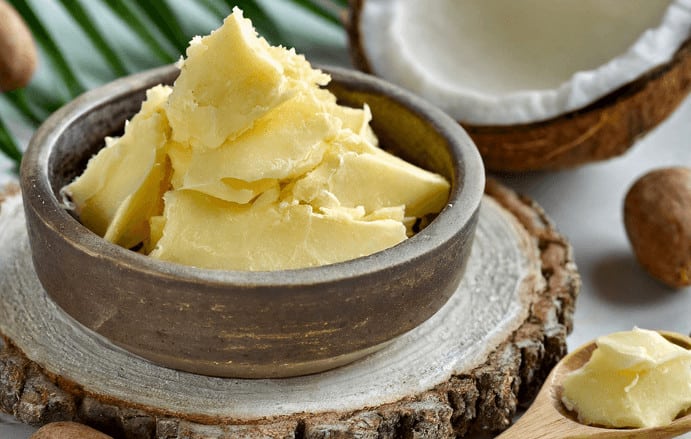
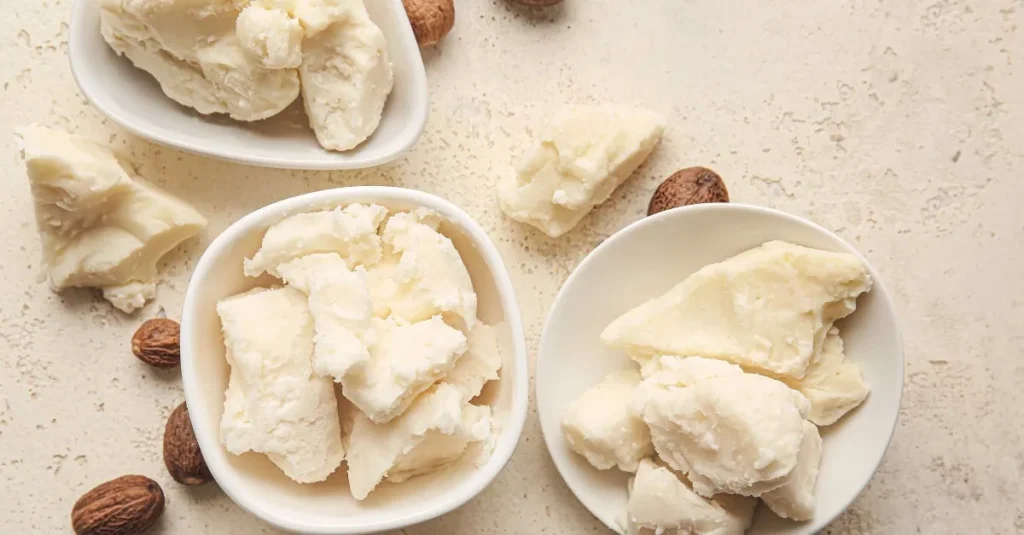
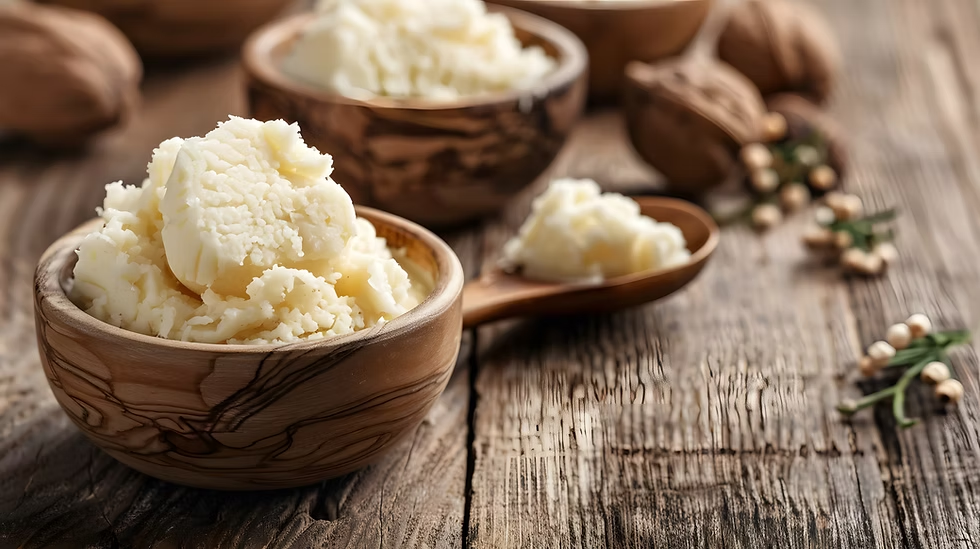

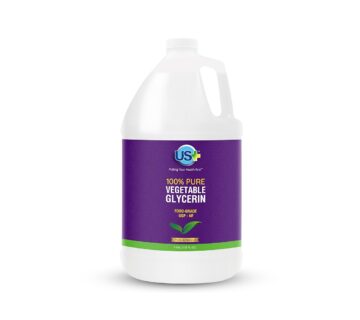
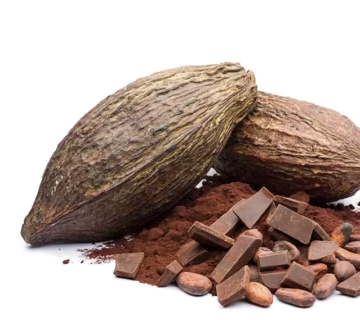
No comment